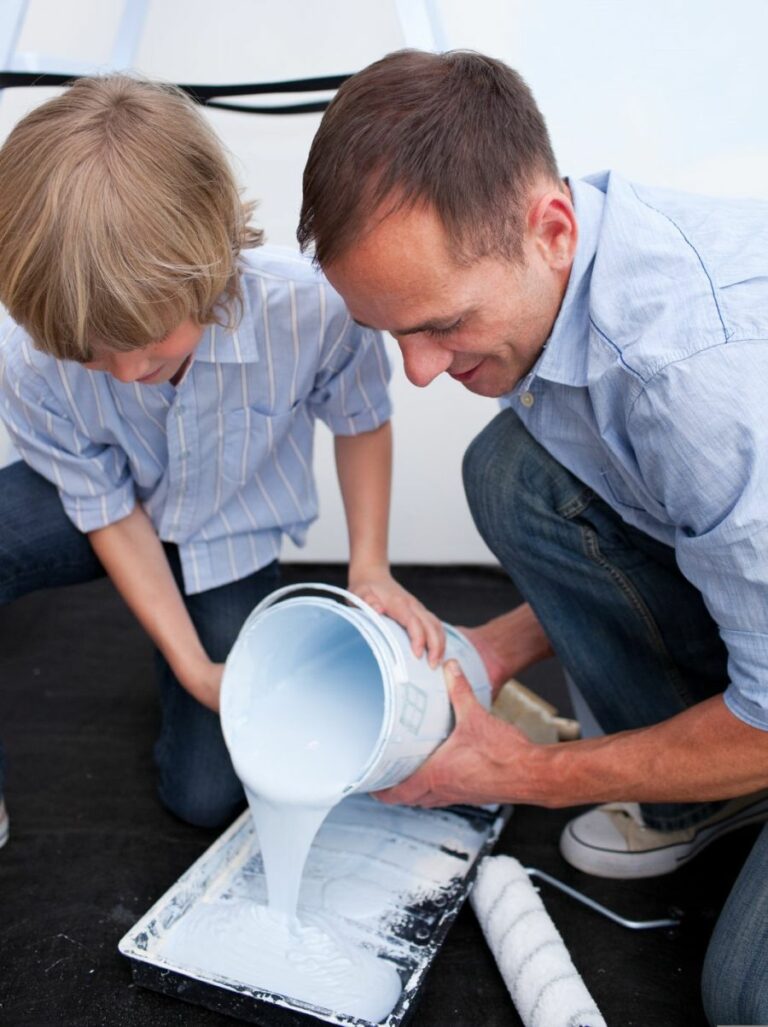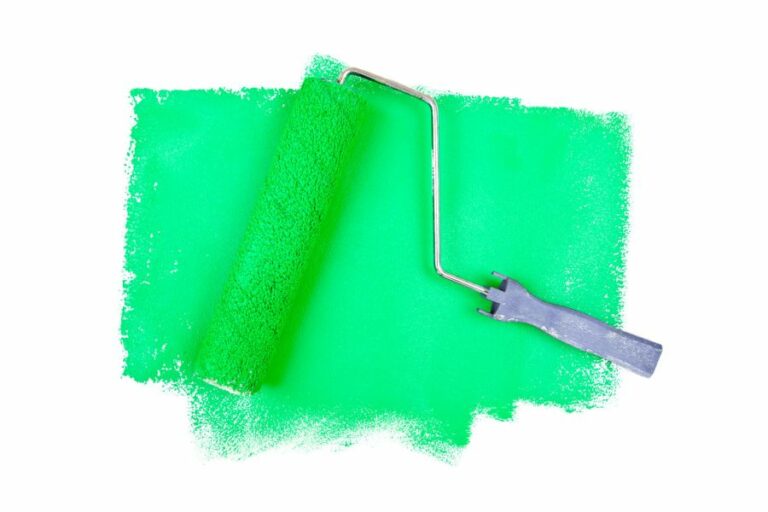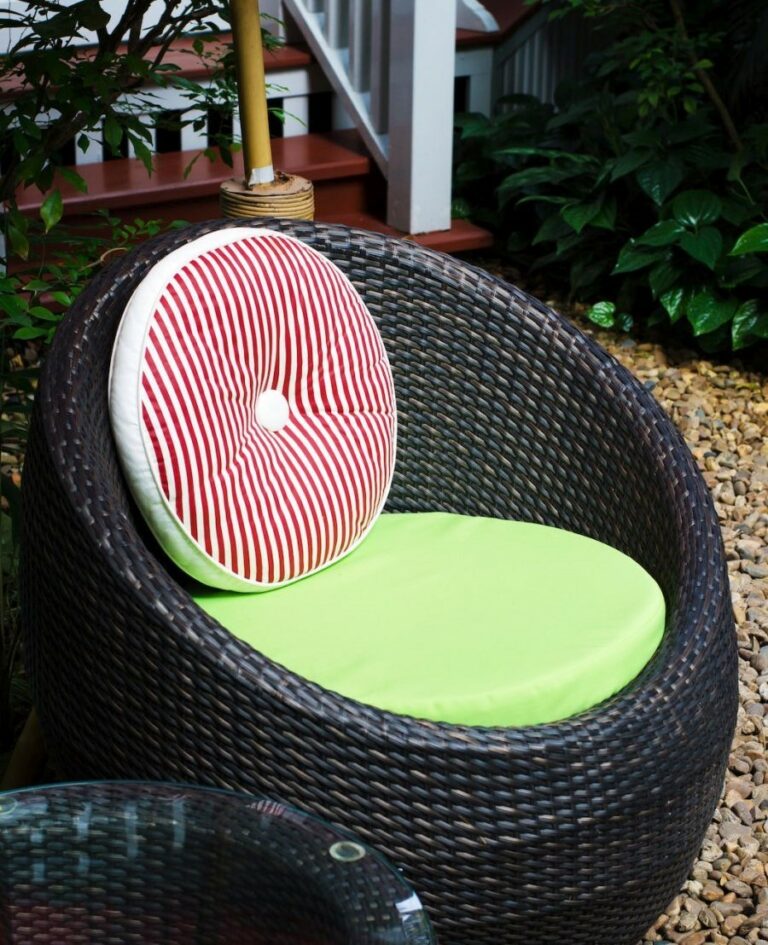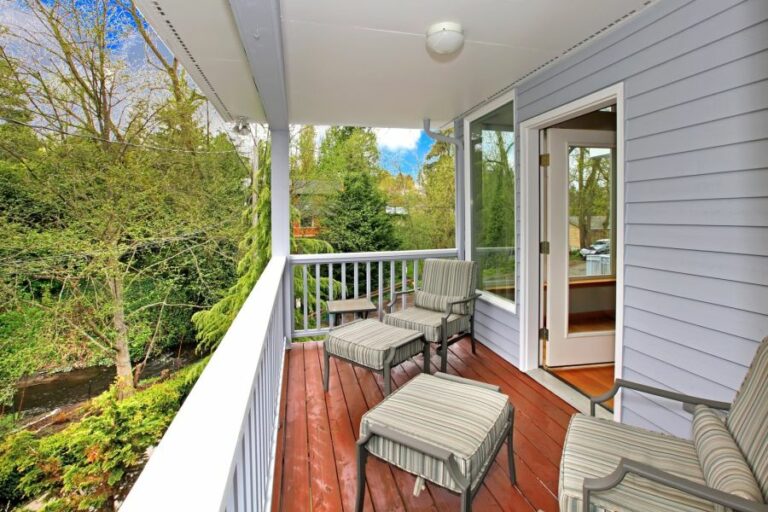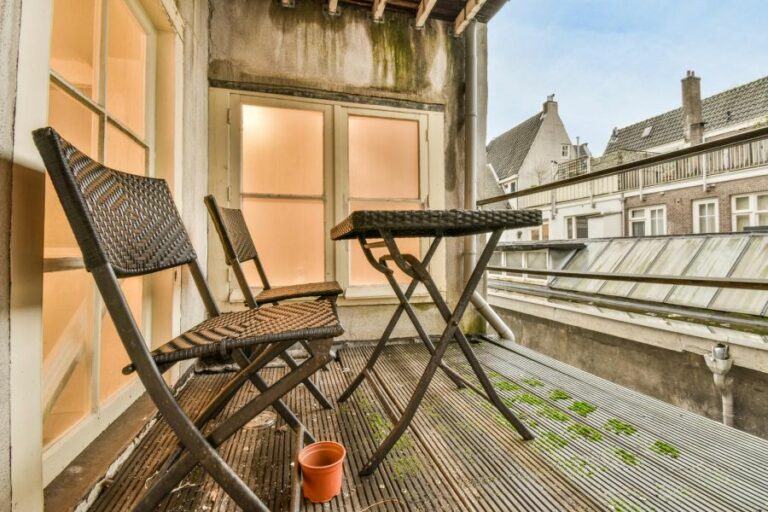Outdoor Patio Paint Ideas, 25 Things You Should Know
Are you looking to revamp your outdoor patio into a vibrant, inviting space? Discover a plethora of creative painting techniques, color combinations, and design tips that will help you turn that bland patio into a tropical oasis or a Mediterranean dream. No matter your style, be inspired and unleash your inner artist as you prepare to give your outdoor space a fresh, new look that will leave your guests in awe!
Outdoor patio paint ideas:
Enhance your outdoor patio’s aesthetics and value by utilizing ideas like neutral and earthy tones for a subtle look, vibrant colors for added character, a monochromatic palette for minimalist spaces, accent walls for visual interest, creative flooring paint patterns, multi-functional painting designs, and well-chosen furniture and accessories. Experiment with various color schemes, accents, and finishing touches to create a captivating and relaxing outdoor space that aligns with your style and vision.

Discover innovative and stylish patio paint ideas to elevate your outdoor living space. Transform your outdoor oasis with unique color combinations, creative patterns, and durable finishes that stand up to the elements. Keep reading to find inspiration and practical tips for your next patio painting project.
Contents
- 1 Exterior Patio Painting Inspiration and Ideas
- 1.1 • Neutral and Earthy Tones for a Subtle Look
- 1.2 • Vibrant Colors to Add Character
- 1.3 • Monochromatic Palette for a Minimalist Space
- 1.4 • Accent Walls to Make a Statement
- 1.5 • Outdoor Patio Flooring Paint Ideas
- 1.6 • Multi-functional Painting Ideas
- 1.7 • Finishing Touches: Furniture and Accessories
- 2 What Kind of Paint is Most Suitable for an Outdoor Patio?
- 3 Is it advisable to paint a concrete patio for aesthetic and functional purposes?
- 4 What is the Most Suitable Color for Painting a Concrete Patio?
- 5 What color is best suited for painting my outdoor patio area?
Exterior Patio Painting Inspiration and Ideas
A well-designed and thoughtfully painted outdoor patio can elevate your home’s aesthetics, creating a welcoming and relaxing space for you and your guests. By choosing the perfect paint ideas for your outdoor patio, you can create an appealing ambiance and enhance your home’s overall value.
• Neutral and Earthy Tones for a Subtle Look
Neutral and earthy tones such as beige, brown, and light gray can give your outdoor patio a sense of tranquility and serenity while achieving a polished and visually striking result.
These colors blend seamlessly with the natural surroundings and allow other features, such as furniture and accessories, to stand out.
– Recommended Neutral Colors:
- Creamy Beige: For a calming, soothing atmosphere
- Light Gray: A modern and clean look that pairs well with various accessories
- Warm Brown: A perfect balance between traditional and contemporary styles
• Vibrant Colors to Add Character
If your goal is to create a dramatic and eye-catching outdoor space, choosing vibrant colors for your patio may be the right choice for you. You can either go for a single bold color or mix and match for an eclectic aesthetic.
– Recommended Vibrant Colors
- Turquoise: Adds a pop of color that works amazingly with other bright shades and natural elements
- Coral: A playful and cheerful hue that evokes a beachy vibe
- Sunny Yellow: Perfect for adding brightness and warmth to your patio
• Monochromatic Palette for a Minimalist Space
Choosing a monochromatic color scheme is an excellent way to create a visually cohesive and clean design for your outdoor patio. Use different shades of the chosen color to paint different elements such as walls, patio floors, and furniture.
– Recommended Monochromatic Schemes
- Cool Gray: Offering a timeless and elegant look
- Crisp White: Creates an open and airy feel
- Navy Blue: A sophisticated, classic choice with a touch of drama
• Accent Walls to Make a Statement
Incorporating an accent wall is a clever trick to make your outdoor patio more visually stimulating without overwhelming the space. You can opt for a bold, contrasting hue or interesting patterns, such as stripes or geometric designs.
– Recommended Accent Wall Ideas
- Contrasting Color: Choose a color that contrasts with the other walls of your patio for a striking effect
- Stenciled Patterns: Use stencils to create intricate designs in a complementary shade
- Textured Wall: Add depth and interest by incorporating a textured finish or paint technique
• Outdoor Patio Flooring Paint Ideas
Your patio flooring has the potential to become a canvas for creative expression, with various colors and patterns that can instantly elevate the overall design.
– Recommended Flooring Paint Ideas
- Solid Color: Choose a single color that complements the walls and other decor elements
- Checkerboard: A classic black-and-white checkerboard pattern adds a vintage charm
- Geometric: Create bold patterns and shapes with different shades of a chosen palette
• Multi-functional Painting Ideas
Transform your outdoor patio into an artistic, functional space by integrating design elements that serve specific purposes.
– Recommended Multi-functional Painting Ideas
- Painted Rug: Create the illusion of an outdoor rug using contrasting colors and patterns. It provides a designated space for patio furniture and adds visual interest.
- Chalkboard wall: Paint a wall with chalkboard paint to create a versatile space for art, reminders, or a kids’ play area
- Floor Games: Use paint to design outdoor game boards such as hopscotch or chess on your patio floor
• Finishing Touches: Furniture and Accessories
Once you’ve decided on your preferred outdoor patio paint ideas, it’s essential to consider matching or contrasting your furniture and accessories, depending on the overall aesthetic you’re trying to achieve.
– Recommended Patio Furniture and Accessory Ideas
- Colorful Throw Pillows: Add pops of color to your neutral patio furniture with vibrant cushions and throw pillows
- Planters: Incorporate planters in complementary colors, adding life and greenery to your space
- Outdoor Art: Select outdoor-safe art pieces that blend harmoniously with the painted walls and add an extra layer of visual interest
In conclusion, there is no shortage of outdoor patio paint ideas you can experiment with to transform your space into your own personal haven. The key is to choose the perfect color scheme, accents, and finishing touches that align with your style and vision for your outdoor oasis.
By considering the suggestions in this article and using your creativity, you will create a captivating and enjoyable outdoor patio for you and your guests to cherish.
Idea | Description |
|---|---|
Bold Colors | Add a pop of color to your patio with a bright paint, such as red, blue, or green. |
Neutral Tones | Keep the focus on your patio furniture and decor with a neutral paint color like beige or gray. |
Colorful Patterns | Use stencils to create unique patterns, such as geometric shapes or floral designs, with paint on your patio floor. |
Faux Finishes | Create the look of stone, brick, or wood on your patio with a faux finish painting technique. |
Textured Surfaces | Add texture to your patio with paint designed for outdoor use, such as anti-slip or textured patio paint. |
What Kind of Paint is Most Suitable for an Outdoor Patio?
Choosing the right type of paint for your outdoor patio can be a daunting task. With various options available in the market, it’s important to understand the characteristics of each type of paint to make the best decision for your patio.
– Acrylic Latex Paint
Acrylic latex paint is one of the most popular choices for painting outdoor patios, and there are good reasons for that. This type of paint is highly durable, making it perfect for withstanding harsh weather conditions. It is also resistant to UV rays, protecting the color from fading over time.
Benefits of Acrylic Latex Paint
- Water-based: Acrylic latex paint is easy to clean up with soap and water. This makes it an eco-friendly option compared to oil-based paints, which require harsh and toxic chemicals for clean-up.
- Quick-drying: This type of paint dries fast, allowing you to apply multiple coats in a relatively short amount of time.
- Low odor: Acrylic latex paint has a low odor, making it a more pleasant working environment while painting your patio.
- Non-flammable: The water-based nature of acrylic latex paint means it is less likely to catch fire, enhancing the safety of your outdoor patio.
From my experience, I recommend using a high-quality acrylic latex paint for long-lasting and outstanding results on your outdoor patio. Brands such as Sherwin-Williams and Benjamin Moore offer excellent options in this category.
– Oil-Based Paint
Oil-based paint was once the go-to choice for outdoor patios, but its popularity has dwindled over recent years due to increased awareness about its environmental impact. Still, it’s essential to consider its benefits when choosing the best paint for your patio.
Benefits of Oil-Based Paint
- Durable finish: Oil-based paint creates a strong and long-lasting surface, making it suitable for high-traffic outdoor patios.
- Superior adhesion: This type of paint adheres well to surfaces, providing excellent coverage and minimizing the need for multiple coats.
- Smooth leveling: Oil-based paint has a self-leveling property that enables it to dry smoothly, reducing brush marks and creating an even finish.
Despite the benefits, I would generally not recommend using oil-based paint for your outdoor patio unless you have a specific reason, such as painting over existing oil-based paint.
The environmental and health concerns, combined with the availability of high-quality acrylic latex alternatives, make oil-based paint a less attractive option.
– Porch and Patio Floor Paint
Many paint manufacturers offer specific products designed for porch and patio floors, often available in both oil-based and water-based formulas. These paints are designed to provide a durable, protective coating that withstands foot traffic and outdoor elements.
Benefits of Porch and Patio Floor Paint
- Durable: These paints are specifically formulated to withstand heavy foot traffic, making them ideal for outdoor patios.
- Skid-resistant: Some porch and patio floor paints have additives that provide a skid-resistant surface, which is particularly useful for steps and slippery areas.
- Excellent coverage: Porch and patio floor paints typically have a thicker consistency than regular paint, ensuring better coverage over patio surfaces.
I recommend using a porch and patio floor paint from a reputable brand if you are specifically looking to paint the floor of your outdoor patio. They are designed to provide the durability and protection necessary for this type of surface.
– Paints with built-in sealer
Certain paints available in the market come with a built-in sealer, offering an all-in-one solution for painting and protecting your outdoor patio. They are typically acrylic-based and provide a durable, waterproof coating.
Benefits of Paints with Built-in Sealer
- Time-saving: You don’t need to apply a separate sealer, saving you time and effort during the painting process.
- Waterproof: These paints provide an added layer of protection against water, preventing damage to your patio surface.
- UV resistant: Like acrylic latex paint, paints with a built-in sealer usually offer UV resistance, safeguarding the color from fading over time.
In situations where you want a one-step solution with the assurance of a protective coating, I recommend using paint with a built-in sealer. Choosing a high-quality product from a trusted brand is crucial for optimal results.
• Conclusion
When selecting a paint suitable for an outdoor patio, I highly recommend considering acrylic latex paint or a high-quality porch and patio floor paint. These options provide durability, resistance to weather conditions, and a long-lasting finish, ensuring your patio looks fantastic for years to come.
Don’t forget to prepare your patio surface properly before painting, including cleaning, repairing any damage, and priming if necessary. This will ensure that your chosen paint adheres well to the surface and provides the best possible results.
Type of Paint | Pros | Cons |
|---|---|---|
Acrylic Latex Paint | Water-based, easy clean up, quick drying, resistant to fading and weathering | Not as durable as oil-based paints, may require multiple coats |
Oil-Based Paint | Durable, long-lasting finish, sticks well to various surfaces | Longer drying time, difficult clean up, contains volatile organic compounds (VOCs) |
Concrete Paint | Designed specifically for concrete surfaces, provides a durable, long-lasting finish | May require additional preparation, such as etching or priming |
Porch and Patio Paint | Formulated specifically for outdoor use, durable, weather-resistant | May not adhere well to some surfaces, such as wood or metal |
Epoxy Paint | Extremely durable and long-lasting, highly resistant to weathering and wear | Requires precise mixing and application, has a strong odor |
Is it advisable to paint a concrete patio for aesthetic and functional purposes?
Considering enhancing your outdoor space with a fresh look? Painting a concrete patio can be a fantastic choice to achieve a refreshed and aesthetically pleasing appearance.
However, as with any home improvement project, it’s essential to weigh the advantages and disadvantages before making a decision.
• Benefits of Painting a Concrete Patio
– Aesthetic Appeal
One of the most significant benefits of painting a concrete patio is the potential to transform its appearance drastically. A fresh coat of paint can help you achieve a vibrant and inviting ambiance in your outdoor living space.
You can choose from various colors and styles, allowing you to customize your patio’s look to complement your home’s overall aesthetic.
– Cost-Effective
Painting a concrete patio is a relatively affordable solution compared to other types of patio upgrades, such as installing pavers or natural stone. It can be an excellent option if you’re on a tight budget but still want to enhance your patio’s appearance.
– Extended Lifespan
Painting your concrete patio can also provide added protection against the elements, such as sun, rain, and temperature fluctuations. This additional protection can help prevent cracking, chipping, and fading of the concrete surface, ultimately extending the lifespan of your patio.
– Easy to Maintain
Painted concrete patios are relatively easy to clean and maintain. Most spills can be wiped away with a mild detergent and water. Additionally, reapplication of the paint is simple and less expensive than replacing pavers or other materials.
• Drawbacks of Painting a Concrete Patio
– Surface Preparation is Crucial
Proper surface preparation is vital when painting a concrete patio. This includes thoroughly cleaning the patio and ensuring it’s free from any dirt, oil, or other contaminants that could interfere with paint adhesion.
It’s also essential to fill any cracks or holes before painting, as this can affect the paint’s performance and aesthetic appeal. These additional steps may require extra time, effort, and cost.
– Concrete Moisture Content
If your concrete patio has a high moisture content, this can cause paint to lift or bubble over time. It’s essential to test the concrete’s moisture content before painting, and if necessary, you may need to undertake additional moisture control measures such as installing a vapor barrier or using a moisture-blocking primer.
– Periodic Repainting
While painting a concrete patio can extend its lifespan and protect it from the elements, it’s essential to remember that the paint will require periodic reapplication.
Depending on factors such as climate, wear, and the quality of the paint, you may need to repaint your patio every few years to maintain its appearance and quality.
• Considerations for Painting a Concrete Patio
– Choosing the Right Paint
Not all paints are suitable for outdoor use or for application on concrete surfaces. It’s crucial to select a paint specifically designed for exterior concrete surfaces to ensure appropriate durability, weather resistance, and adhesion.
High-quality acrylic latex paints or specially formulated concrete paints are ideal choices for this purpose.
– Applying a Sealer
Applying a sealer after painting your concrete patio can offer additional protection against the elements and extend the paint’s lifespan. A high-quality concrete sealer can help prevent moisture penetration, reduce the risk of mold and mildew growth, and protect the surface from UV damage.
– Safety/Traction
Painted concrete surfaces can become slippery when wet. To enhance safety and minimize the risk of slips and falls, consider using a paint additive to provide a non-slip surface or applying a non-slip coating after the paint has dried.
Alternatively, you can opt for a textured paint specifically designed to improve traction on concrete surfaces.
• Final Thoughts
Painting a concrete patio can be a cost-effective and visually appealing upgrade to your outdoor living space. However, it’s essential to weigh the advantages and drawbacks and consider factors such as surface preparation, moisture content, and paint choice before embarking on your painting project.
If you’re looking for a relatively affordable and straightforward way to give your patio a fresh new look, I recommend considering painting as an option.
With proper preparation, paint selection, and maintenance, you can achieve a beautiful and long-lasting finish that greatly enhances the appeal of your outdoor space.
What is the Most Suitable Color for Painting a Concrete Patio?
Transforming a concrete patio by painting it is an excellent idea to revitalize the space and create an appealing outdoor living environment. However, selecting the perfect color to paint a concrete patio can be overwhelming, given the plethora of choices available in the market.
• Factors to Consider When Choosing the Perfect Color
1. Surrounding Elements and Natural Setting
It’s essential to take into account the surrounding elements and the natural setting of your outdoor space when choosing a color for your concrete patio. The selected color should complement your home’s exterior, landscaping, and other outdoor furniture.
For instance, if your property has a modern or minimalist aesthetic, opt for colors like gray, black, or white. On the other hand, if your home and garden have a more traditional or rustic appeal, opt for earthy tones like brown, beige, or terracotta.
2. Climate and Sun Exposure
Color can also affect how you experience your outdoor space in different weather conditions. Dark colors tend to absorb heat, making your patio uncomfortable or even unsafe in hot climates or during the summer season.
Light colors will reflect sunlight, keeping your patio cooler underfoot, even during the hottest days.
Additionally, lighter colors will also fare better under constant sun exposure compared to darker colors, as they are less likely to show signs of fading, another essential factor to take into account when selecting a color for your concrete patio.
– 3. Maintenance and Durability
Darker colors typically hide dirt and stains better than light-colored options, requiring less frequent cleaning and maintenance. However, as mentioned earlier, dark colors can also retain heat, which might not be suitable for some climates.
Colors play an essential role in camouflage wearing, chipping or cracking of the paint job. Therefore, opt for a color that is close to the original color of your concrete patio to make it easier to maintain.
• Popular Concrete Patio Paint Colors
1. Grays
Gray is a versatile and modern color that can work well with numerous architectural and landscape designs. Light grays have a cooler and cleaner appearance, while darker grays offer a sophisticated and sleek look.
According to my experience, light gray tones work best in warmer climates or areas that receive a lot of sunlight, as they can effectively help keep the patio cool. Darker grays are an excellent choice for areas with heavy foot traffic or those prone to staining.
2. Earth Tones
Earth tones, such as beige, tan, and terracotta, are classic colors that blend seamlessly with the natural surroundings. These colors create a warm and inviting atmosphere and are known for their timeless appeal.
Brown shades work exceptionally well for patio areas situated within a garden or surrounded by plenty of greenery. Similarly, terracotta offers a rustic look, ideal for spaces that feature a Mediterranean or southwestern design.
3. Whites and Off-Whites
White or off-white colors are excellent for creating a bright and refreshing atmosphere in your patio space. These colors can make small patios appear more spacious and provide a crisp, clean appearance.
As a recommendation, choose a slightly off-white shade to avoid the need for stringent maintenance, as pure white can show dirt and stains more easily.
4. Blues and Greens
For those looking to add a pop of color to their outdoor space, blues and greens can be an excellent choice for a patio. These colors create a vibrant and welcoming atmosphere that perfectly complements the outdoors.
Light and refreshing shades of blue, such as sky blue or teal, can create a coastal beach vibe, while dark blues, like navy, can bring a more contemporary touch.
Similarly, green tones can complement the surrounding landscape, creating a harmonious and natural ambiance in your outdoor space. Light and bright greens evoke a fresh, garden-inspired feel, while darker shades can add depth and intrigue.
• Final Thoughts
In conclusion, the best color to paint a concrete patio depends on various factors such as the surrounding elements, the climate, and maintenance requirements. My recommendations based on experience would include grays, earth tones, whites and off-whites, and blues and greens.
The final decision should be based on your personal preferences, your house exterior, and your patio’s specific needs. Select the color that strikes the perfect balance between aesthetics and practicality and breathe new life into your outdoor space.
Criteria | Best Color |
|---|---|
Complements nature | Earth tones (browns, tans, greens) |
Avoids excessive heat absorption | Light colors (beige, light gray, pale blue) |
Masks dirt and stains | Mid-tone colors (medium gray, muted green) |
Matches the style of the house | Varies, choose a color that complements your home’s exterior |
What color is best suited for painting my outdoor patio area?
Transforming your outdoor patio into a welcoming and appealing living space is an essential aspect of home improvement. One of the easiest ways to elevate the appearance of your patio is by selecting the perfect color for your paint job.
Choosing the right color can be a bit overwhelming, given the numerous options available. However, with careful consideration and a clear vision of your desired outcome, you can make a well-informed decision.
• Assessing Your Patio’s Aesthetic
Before diving into potential colors, take a step back and assess your current patio situation. Consider the style of your home, the material of your patio, and the surrounding landscape. It is crucial to choose a color that complements these elements and creates harmony in your outdoor living space.
– Consider Your Home’s Architecture
Your patio should maintain a seamless flow with your home’s overall design. Therefore, taking into consideration the architectural style of your home is crucial when choosing paint colors.
For example, modern homes often feature neutral tones and clean lines, while traditional homes tend to have warmer, earthier colors. Be sure to match the color of your patio to the aesthetic and period of your home for a cohesive outdoor design.
– Examine the Patio Surface Material
The type of material your patio is made from can have a significant impact on your color choice. For example, a wooden patio may have a beautiful natural grain that you want to preserve, while a concrete patio might require a bolder color.
Additionally, certain materials can affect the longevity and durability of your paint job, so it’s essential to choose a paint that’s compatible with your patio surface.
– Factor in the Surrounding Landscape
Your patio should blend harmoniously with the surrounding landscape, such as gardens, trees, and other natural elements. Observe the predominant colors in your garden and outdoor spaces before making your decision.
Neutral, earthy tones like green, beige, or tan can create a seamless connection with nature, while brighter colors can provide a striking contrast to organic elements.
• Choosing the Ideal Color Palette
Now that you have a thorough understanding of your patio’s aesthetic, it’s time to explore various color palettes. While personal preference plays a major role, considering the following factors can help you narrow down your choices and make an informed decision:
– Opt for Neutral Colors
Neutral colors are a popular choice for outdoor patios because they create a calm and inviting atmosphere. Earthy tones like beige, gray, and taupe are versatile options that blend well with most home styles and landscapes.
These colors are also easy to accessorize, allowing for more creativity with outdoor furniture, cushions, and planters.
– Experiment with Vibrant Hues
To make a statement, don’t shy away from incorporating vibrant hues into your color palette. Bold colors like blue, red, yellow, or orange can breathe life into your outdoor space and make it feel fun and lively.
However, avoid using too many bright colors, which can create visual clutter and disrupt the natural harmony of your patio.
– Create Contrast with Complementary Colors
A well-balanced color scheme can create visual interest and enhance the overall aesthetics of your patio. One way to achieve this is by pairing complementary colors, which are situated opposite each other on the color wheel.
For example, you can combine a warm color like terracotta with a cool color like green to create an eye-catching yet cohesive look.
• Tips for Choosing the Right Paint Type
Once you have decided on the perfect color for your patio, it is essential to select an appropriate paint type. Your choice can influence the durability, maintenance, and overall appearance of your outdoor space:
– Weather Resistant Paints
Outdoor patios are exposed to various weather conditions, such as sunlight, rain, and humidity. Therefore, it is crucial to choose a weather-resistant paint that can withstand these elements and offer long-lasting protection for your patio surface.
Look for paint products specifically formulated for outdoor use, as these typically have built-in UV protection and water resistance.
– Low-Maintenance Paints
Regular exposure to outdoor elements can lead to wear and tear on your patio paint. To minimize maintenance and prolong the lifespan of your paint job, consider opting for a low-maintenance paint like latex. Latex paints dry quickly, resist cracking and peeling, and are easy to clean.
– Eco-Friendly Paints
As a homeowner, it is essential to consider the environmental impact of your paint selection. To ensure your outdoor space remains sustainable, choose eco-friendly paint options with low VOC (volatile organic compound) levels.
These paints release fewer harmful chemicals into the air, resulting in a healthier environment for you and your family.
In conclusion, choosing the perfect color for your outdoor patio requires careful consideration of various factors, including your home’s architectural style, the patio surface material, and your existing landscape.
Strike a balance between neutral colors, vibrant hues, and complementary combinations to create visual harmony and a welcoming atmosphere. Finally, remember to choose weather-resistant, low-maintenance, and eco-friendly paint options to ensure your patio paint job withstands the test of time.

